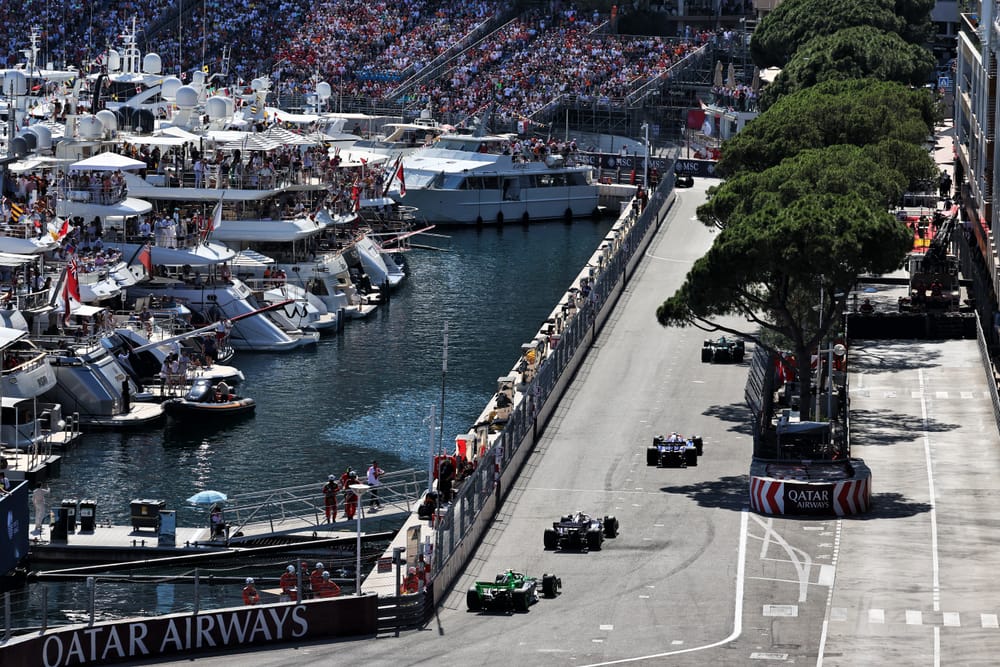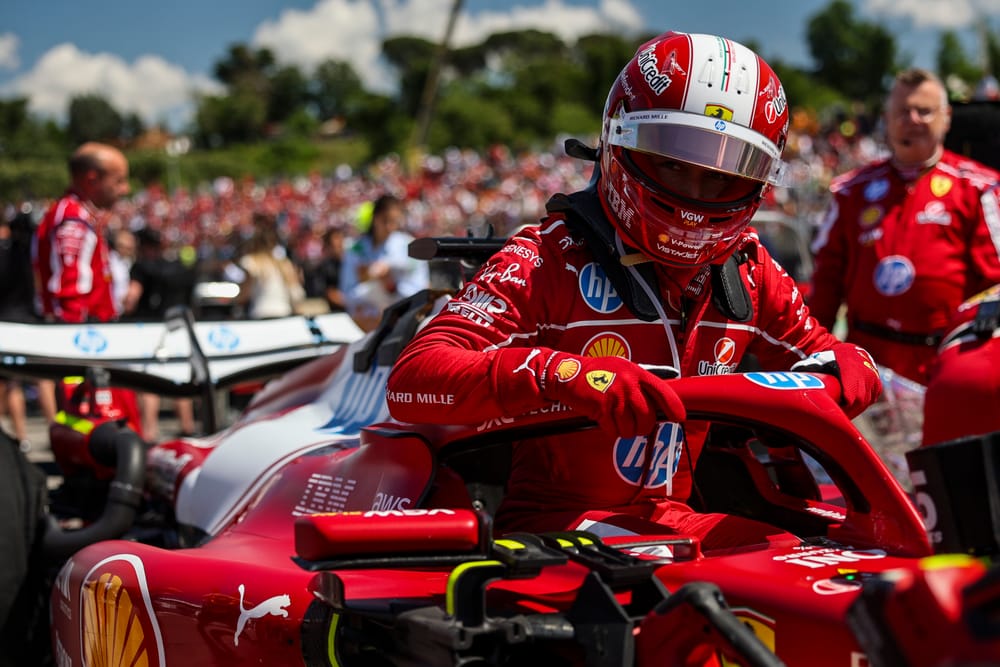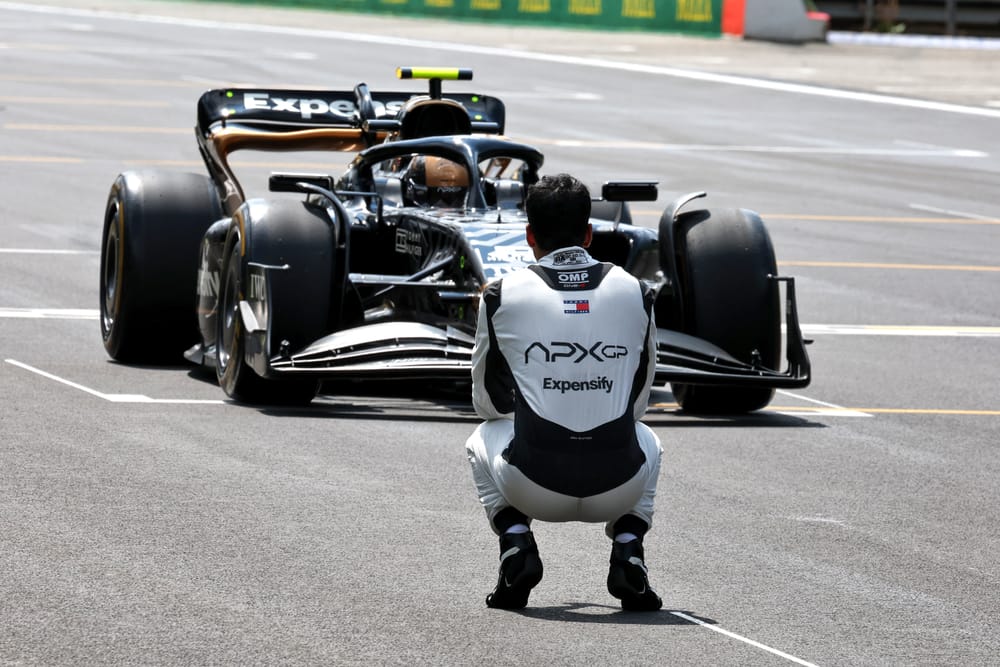Formula 1 is trying something different at the Monaco Grand Prix as it introduces a mandatory two-stop strategy in a bid to spice up the spectacle.
Opinions on its potential impact are divided at the moment, with some suggesting it will not change much and others predicting that it will open the door to a more chaotic afternoon.
Much will depend on the timing of safety cars, and even red flags, but it has definitely added a level of uncertainty for drivers and teams – especially if some squads are more eager to take a gamble than others.
World champion Max Verstappen sees no certainty right now as to how it will play out.
“I guess it can go both ways, where it can be quite straightforward or it can go completely crazy because of safety cars coming into play or not making the right calls,” the Red Bull driver said.
“I think it will spice it up, probably, a bit more, because normally when you have that one stop, once you have a good pit stop and everything is fine, then you drive to the end, you just have to stay focused and not hit the barrier.
“But maybe with the two-stop it can create something different - people gambling, guessing when the right time is to box, so hopefully it will spice it up a bit more.”
But as drivers and teams begin to get their heads around the implications of what is at play, some early points of jeopardy have appeared.
The C6 curveball
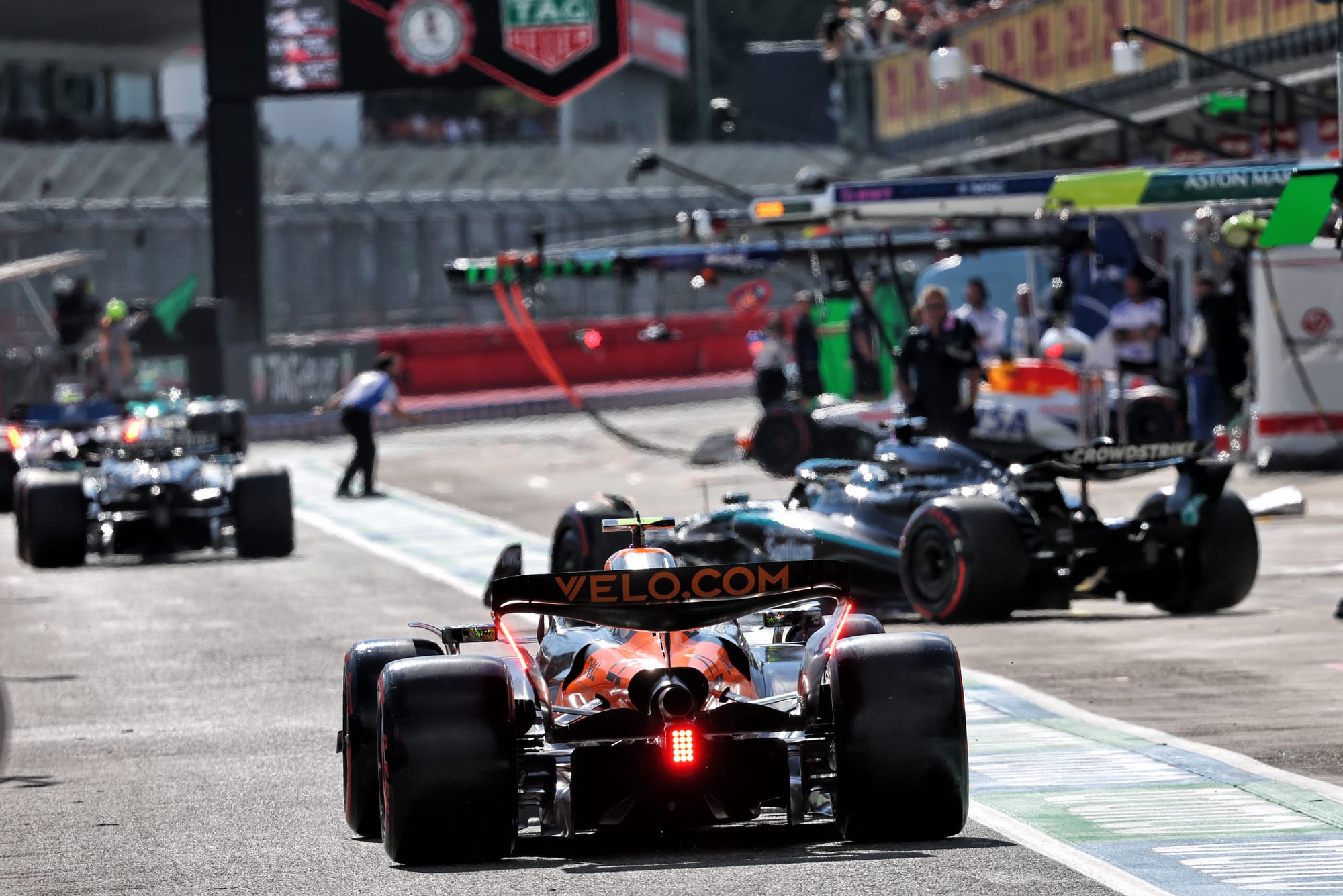
Strategy headaches are not just a case for Sunday’s two-stopper, because the headaches for teams start in Friday practice amid uncertainties over tyres.
The debut of the C6 at Imola last weekend threw a bit of a curveball in that it did not prove automatically quicker over a single lap – and Aston Martin pulled off a shock move in getting both its cars through to Q3 with the medium.
An early conclusion as to why the C6 compound did not work revolved around the soft rubber moving around too much in Imola’s high-speed corners – robbing drivers of confidence at the very time they needed it.
Therefore, the medium tyre, which was theoretically slower, actually ended up being quicker because drivers could lean on it more.
That quirk of the Imola weekend has opened up a scenario where once again the medium could be the tyre to have for qualifying in Monaco – especially with grid positions being so critical.
For some drivers, the situation is slightly up in the air.
Esteban Ocon said: “It’s an uncertainty at the moment, yeah. Nothing guaranteed.
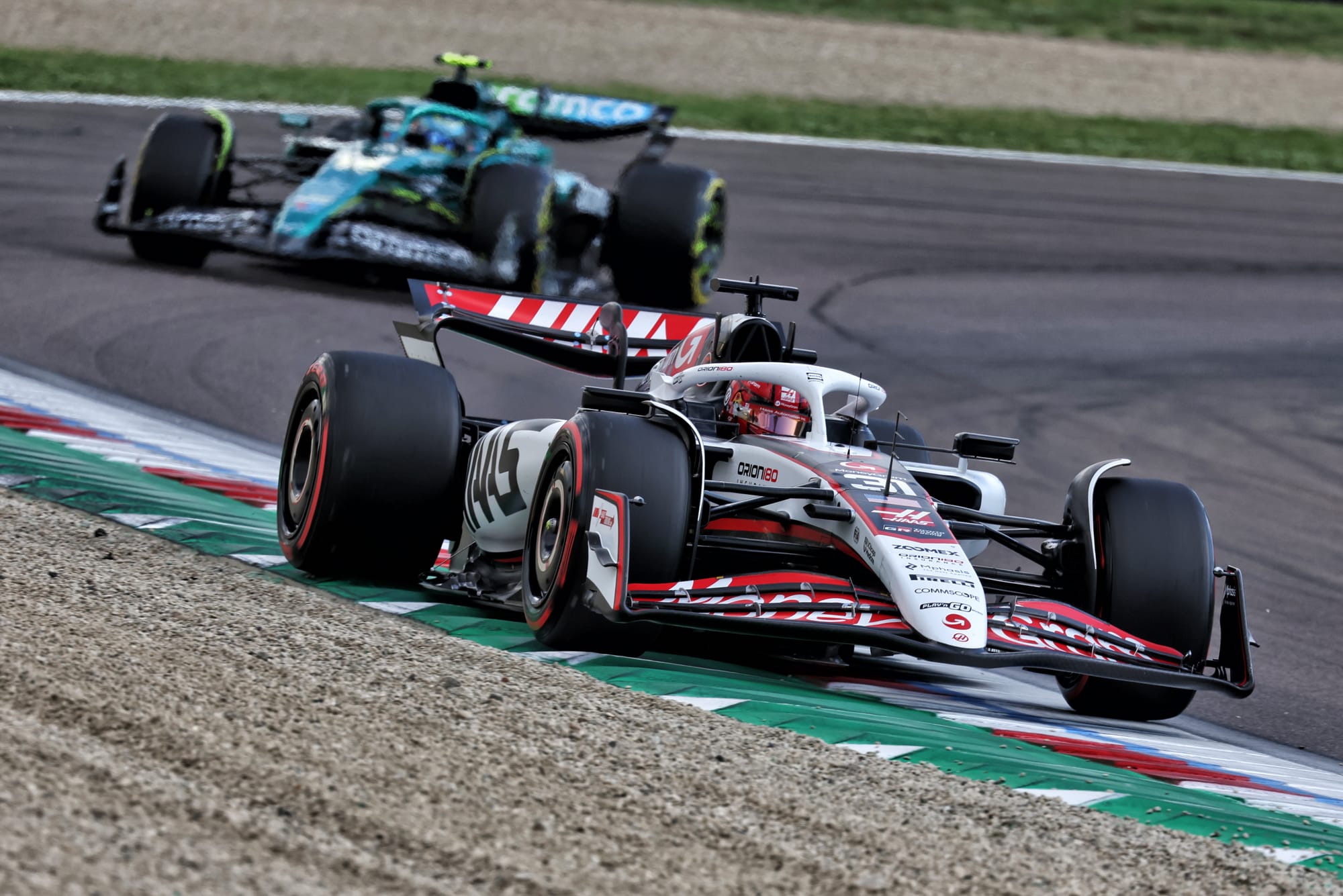
“It was a bit of a surprise that some teams managed to use the C5. Some drivers are going to say it was better, some are going to say it was the same. Time will tell here.
“Obviously it's very different to Imola as a track, so we'll see if the C6 has more of a chance than Imola.”
However, early predictions from others are that Monaco’s different demands – with no high speed corners but more traction zones where the C6 will be better – should make things more straightforward.
Aston Martin’s Fernando Alonso, who put the medium to good effect in qualifying at Imola, said: “I will doubt that here [the C5] is a better tyre.
“The C6 has a little bit more grip, but maybe in Imola with the stress you put on the high-speed corners and things like that, maybe the C6 was a little bit fragile, but here there are not high speed corners. So I think I prefer the sticky C6 tyre to the C5.”
A clear answer on that topic will need to be found as soon as possible because already by the end of first practice teams are having to hand back sets of tyres – so they will not want to waste the wrong compounds.
Alonso added: “The problem is that you cannot test those things you know. You have to commit already in FP1. You need to give back two set of tyres in Q1 and more or less that dictates the rest of the weekend.
“It's not that clear compared to Imola, In FP2 [at Imola], we had the possibility to do a clear compare C6 versus C5 with both cars. And here, every time you go on track, the track evolution is like half a second every run. So whatever tyre you will fit second, it will be always faster. So it's difficult to test.”
Will the polesitter be exposed?
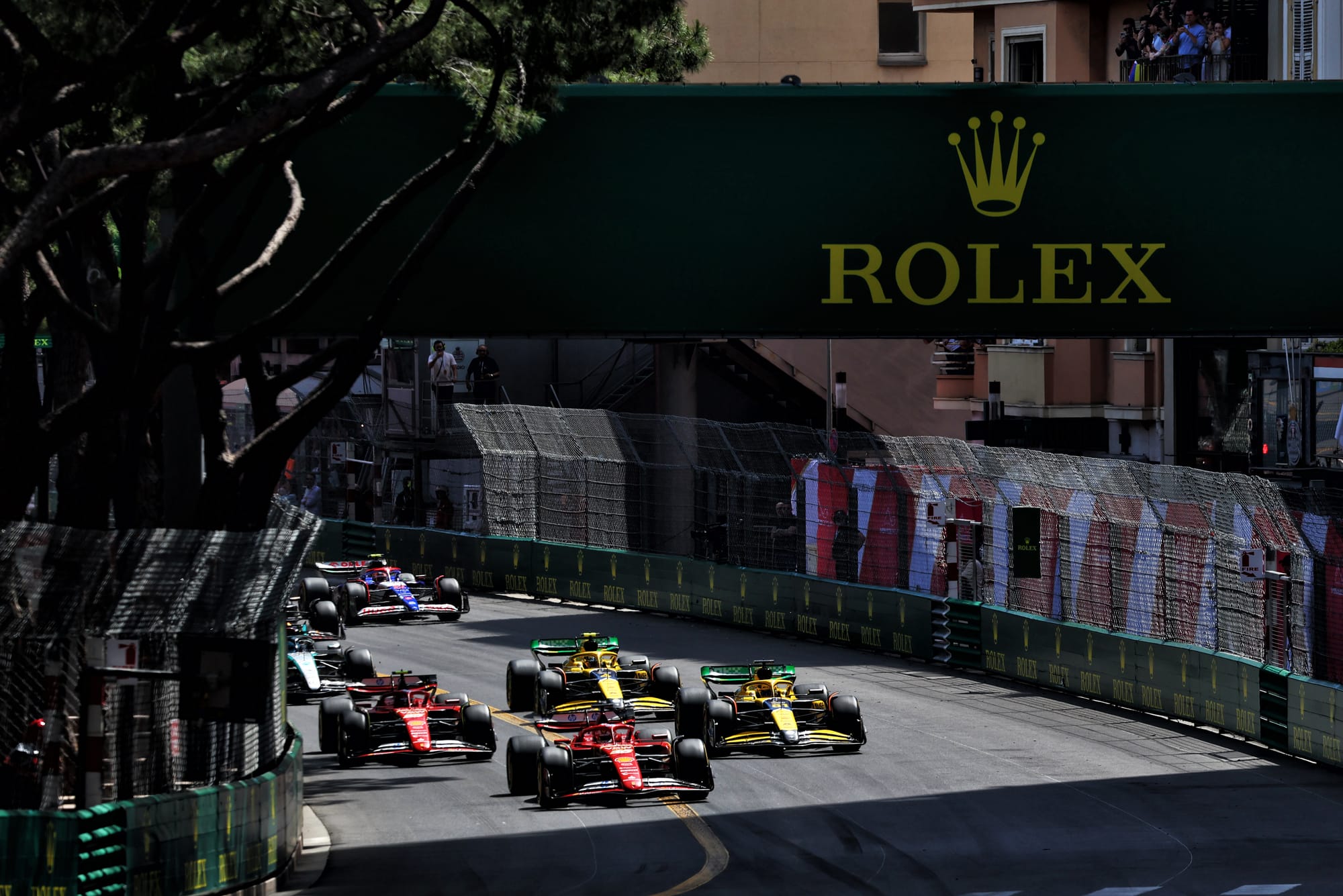
It used to be the case in Monaco that starting from pole position meant that 99% of the victory job was done. The only thing that would likely mess it up would be a pitstop blunder.
But the switch to two mandatory stops makes things more difficult from two perspectives.
The first is that there are twice as many chances to get things wrong, as navigating the way through managing the pace and avoiding the undercut will be critical.
The other issue is that, while drivers at the back of the pack may be willing to take gambles and do something extreme with their stops, that option is not really available to those at the front who do not want to lose track position.
As Alonso said: “Obviously, when you are on pole, you prefer to have one stop, to have a boring race and a normal Monaco.
“Starting behind, you will always think on Saturday night that the two stops will offer an opportunity to make some places and to be lucky with the calls. So yeah, I think it gives some hope on Saturday night for 99% of the grid.”
World championship leader Oscar Piastri reckoned that pole position was still the best place to start from – but things were definitely more complicated now.
“I still think 90-something percent about Monaco is qualifying,” he said. “I think it's very complicated now with these two stops.
"Also just using three sets of tyres, because if there's red flags like we saw last year it's not quite as simple as what it was. It's definitely going to throw a spanner in the works for everyone.
“But I think if you qualify on pole, unless something goes dramatically wrong still, it's going to be hard to be beaten.
"So I think you can roll the dice a bit more, but there's a lot of strategic elements involved. Will it increase overtaking? No, but it will probably lead to a more complicated race.”
Early gamblers?
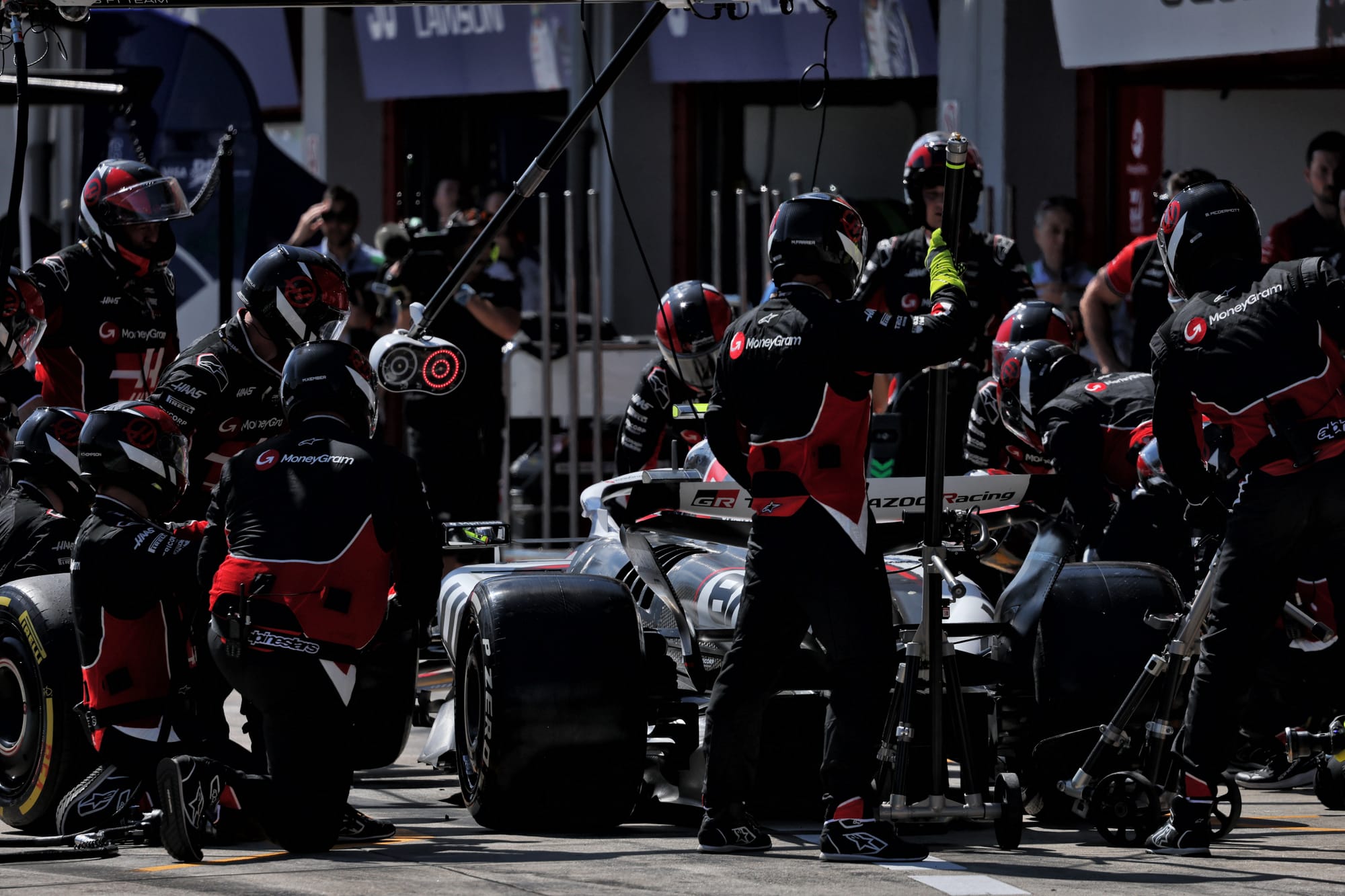
The fact that Monaco's low tyre degradation means the drivers can run the whole race on one set of tyres – as long as pace is managed – has opened a scenario where some backmarkers could choose to get both their stops done right from the off.
The options could be to cycle through both pitstops behind an early safety car, or even pit at the end of the first and second lap regardless – and then close the gap to the pack, especially if the leaders are running slowly.
Haas driver Ollie Bearman said he was already putting thoughts to some leftfield strategies.
“Of course, I've been trying to think about some crazy stuff,” he admitted.
“But I think that's what Saturday night will be about, after qualifying, because our appetite for risk will be very different depending on where we start. But I think there's going to be an element of dice rolling potentially.”
And it’s not impossible that there is a weird scenario where everyone does the same thing: cycles through their stops straight away.
As Williams’s Alex Albon said: “I think the biggest thing is we're doing this to shake it up and the worry is that it doesn't shake it up and it just creates a lap one situation where everyone starts to come into the pits and just tries to take some of the space, try and use the lap 2, 3, 4, 5, whatever it may be, to push and then who knows?”
The risk for early gamblers
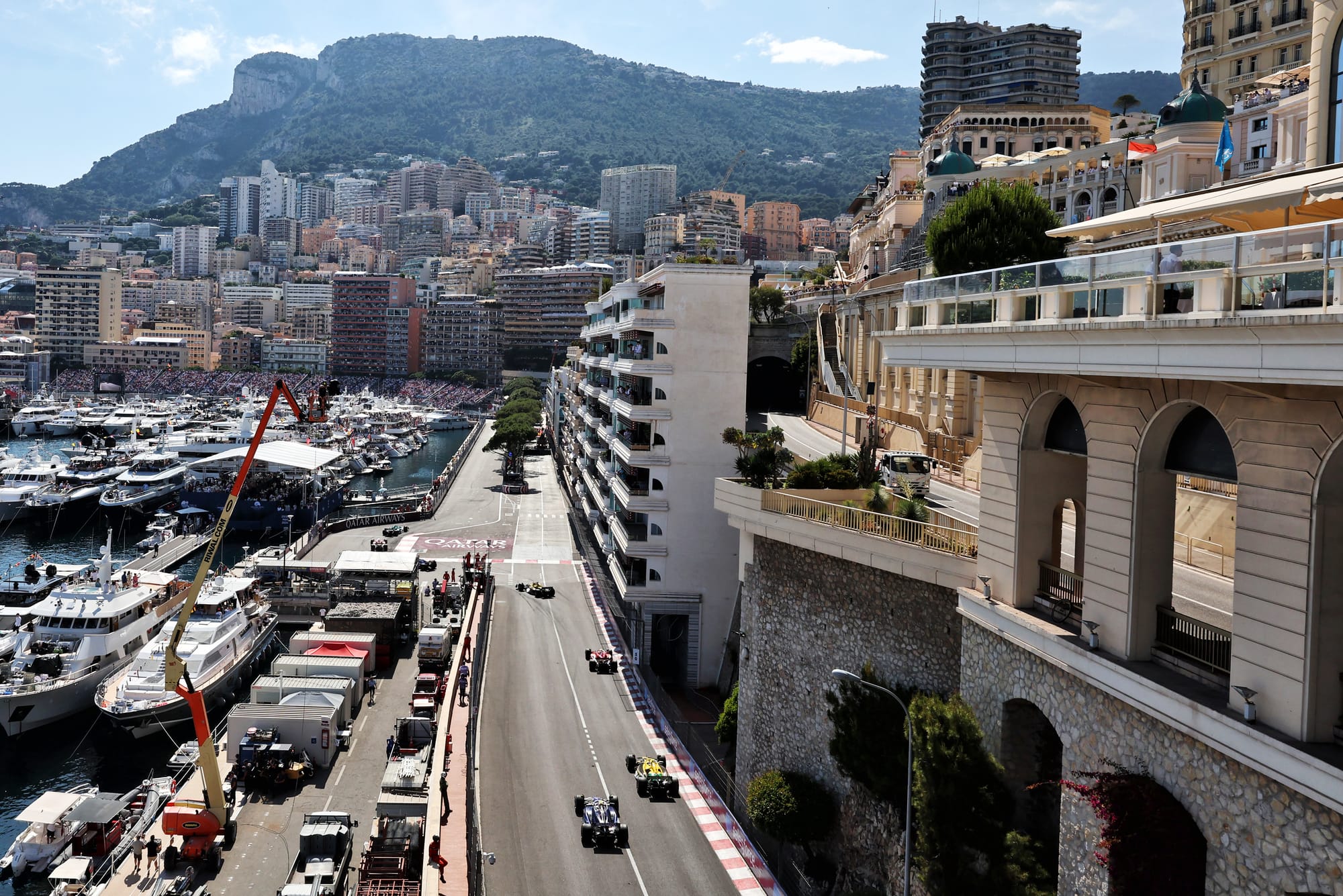
While this idea of clearing both pitstops in the opening laps has been prompted by last year’s race turning into a no-stopper after everyone made their mandatory tyre change under the early red flag, such a move may not be possible this year.
Pirelli has moved Monaco tyre compounds a step softer for 2025, so there is no certainty that the C4 would last a whole race distance if drivers went on to it on lap two.
Sauber’s Beat Zehnder was sceptical that anyone committing to get their pitstops done straight away would be on to a winner.
“I don't think it works this way,” he said. “If the safety car is out, yes, but without the safety car, I don't think it really works because last year, finishing the whole race on one set of tyres, was only possible because the laptimes were about five seconds slower than what we expected.
“Just going out there and changing tyres twice at the beginning without the safety car, I don't think it's going to pay out, because you're going to lose the tyres and they're going to degrade.”
Risk of team-mate shenanigans
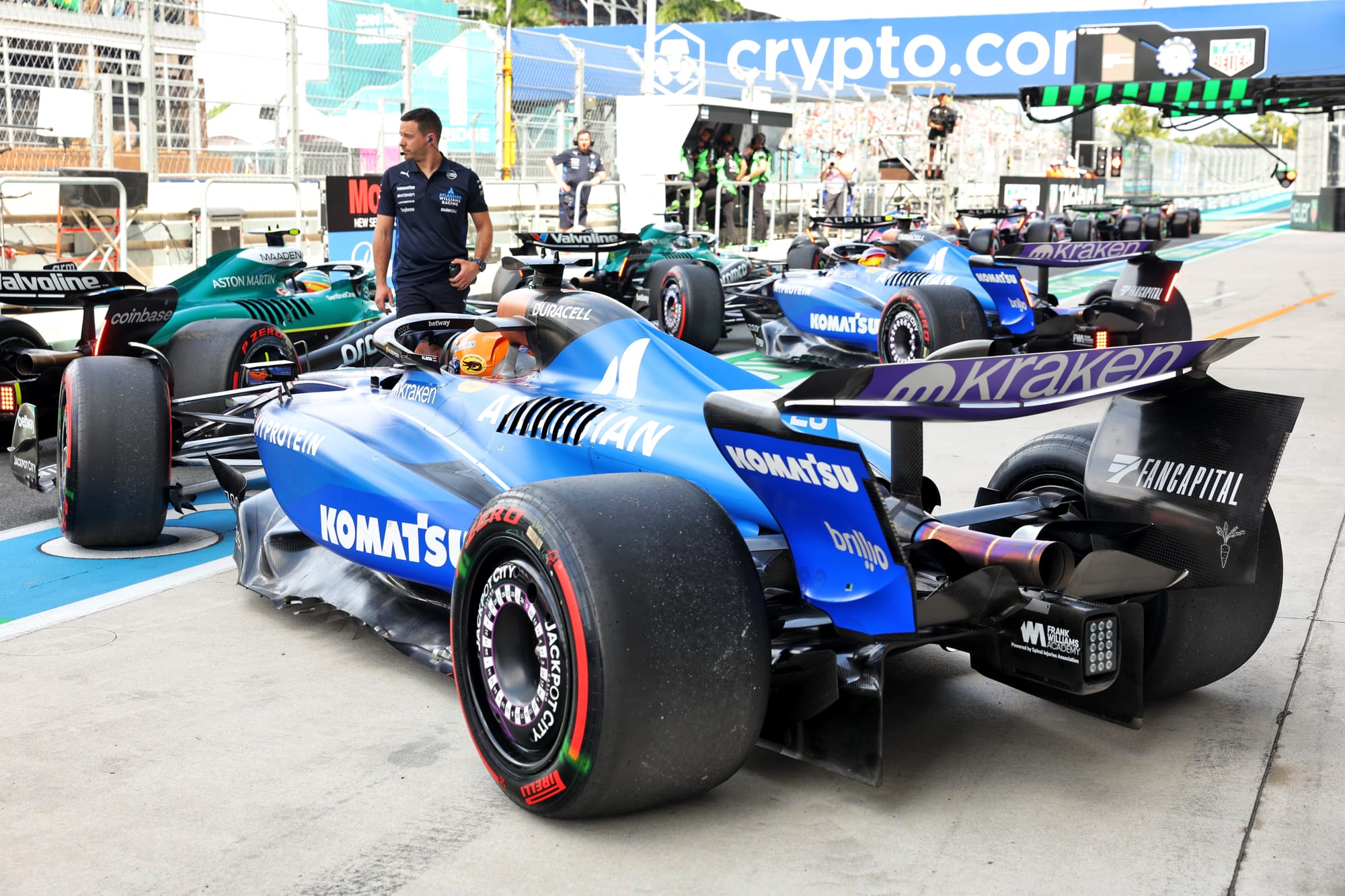
The demand to have two pitstops means there will be stages of the race where some drivers have an advantage – either because they have already completed both tyre changes or they can pit into clean air.
Williams duo Albon and Carlos Sainz have both voiced their own concerns about a potential scenario of drivers holding up cars behind them in a bid to help their team-mates get a free pitstop.
Sainz said: “There is an element of lottery that Monaco can always offer. This year that element is going to be a bit bigger, given the two stop rather than one stop.
“I think everyone who is not starting on pole is welcoming the two stop. Only the guy who will be on pole who will be cursing a bit the fact that the year he’s on pole, is the year it’s a mandatory two stop and a lot of unknowns could happen. The teams will get around it, drivers potentially forced to push a bit more.
“I’m just a bit worried about teams playing a bit too much with the pace, to help the team-mate. I hope there’s not too many gimmicks with that, but it’s F1 so you never know.”
Albon said: “The biggest thing for us, especially in the midfield, is team-mates and how they help team-mates.
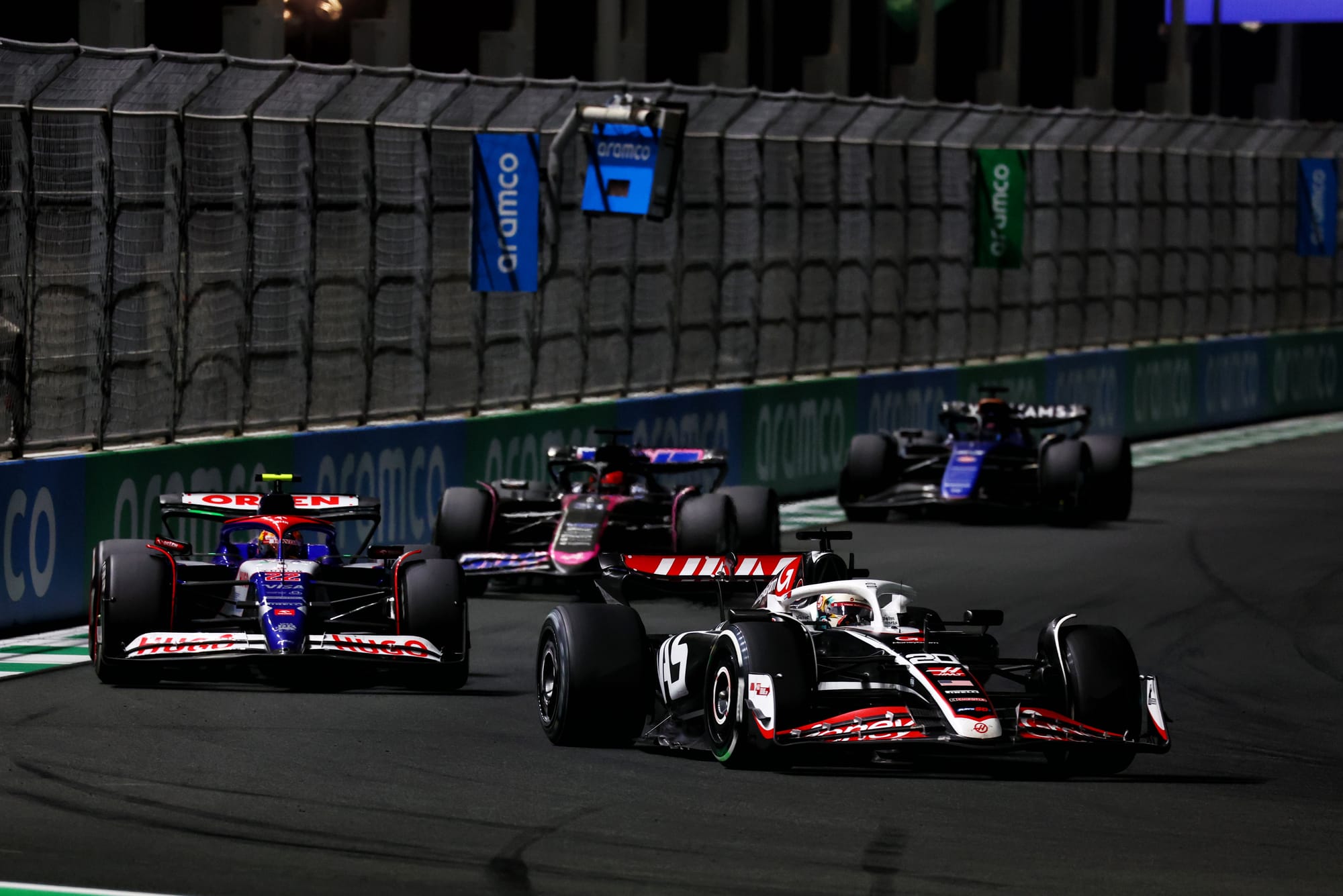
“A good example would be Jeddah last year with Haas with Kevin [Magnussen] where he basically parked the bus and allowed Nico [Hulkenberg] to have a free stop.
“Around a track like here with two stops that's definitely possible and you don't want to race like that. So that's not to say I think it's a good idea to do a two stop, I think we need to try something, but it may not change the style of the race.”


